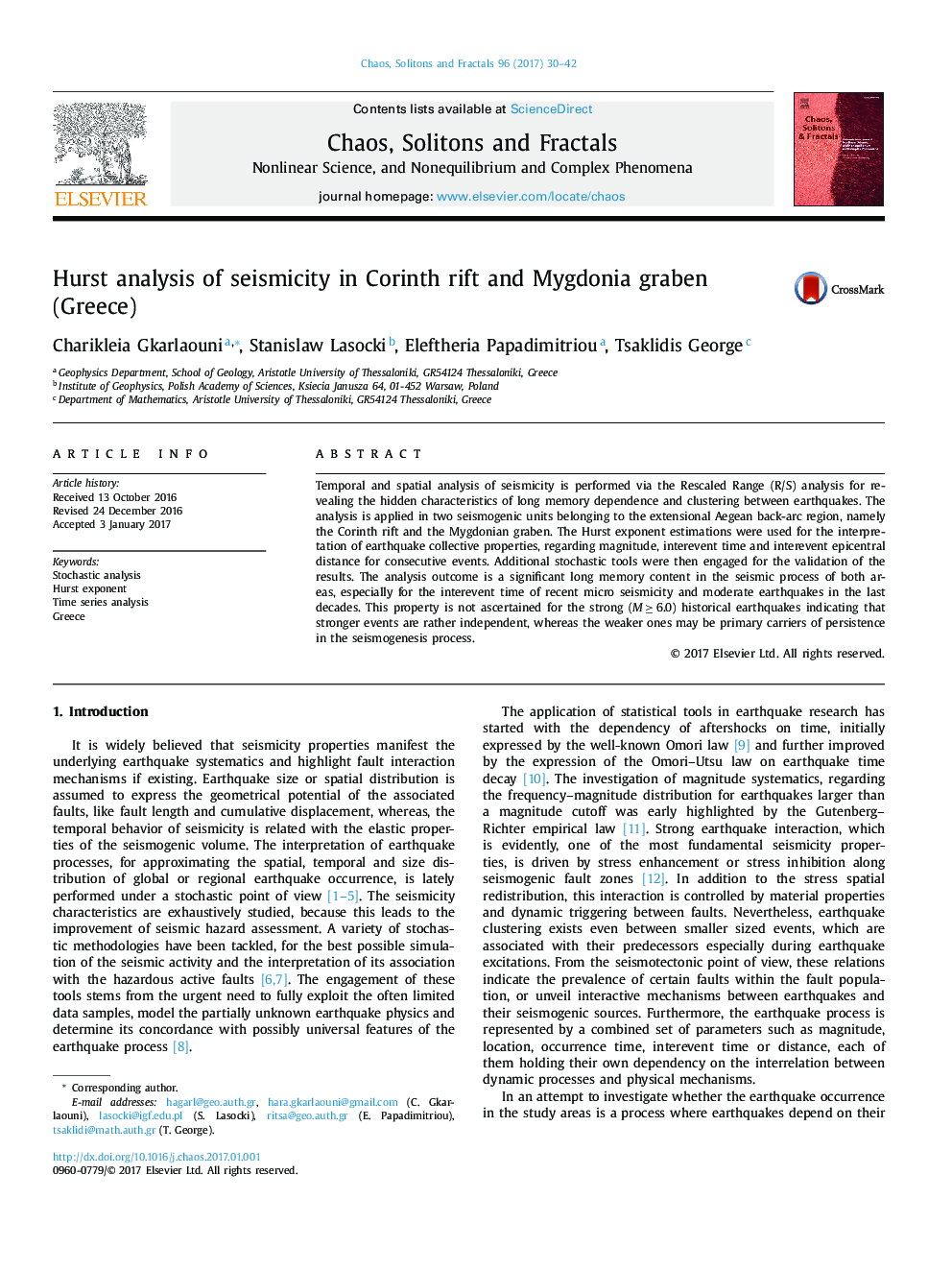| Article ID | Journal | Published Year | Pages | File Type |
|---|---|---|---|---|
| 5499747 | Chaos, Solitons & Fractals | 2017 | 13 Pages |
Abstract
Temporal and spatial analysis of seismicity is performed via the Rescaled Range (R/S) analysis for revealing the hidden characteristics of long memory dependence and clustering between earthquakes. The analysis is applied in two seismogenic units belonging to the extensional Aegean back-arc region, namely the Corinth rift and the Mygdonian graben. The Hurst exponent estimations were used for the interpretation of earthquake collective properties, regarding magnitude, interevent time and interevent epicentral distance for consecutive events. Additional stochastic tools were then engaged for the validation of the results. Τhe analysis outcome is a significant long memory content in the seismic process of both areas, especially for the interevent time of recent micro seismicity and moderate earthquakes in the last decades. This property is not ascertained for the strong (M â¥Â 6.0) historical earthquakes indicating that stronger events are rather independent, whereas the weaker ones may be primary carriers of persistence in the seismogenesis process.
Related Topics
Physical Sciences and Engineering
Physics and Astronomy
Statistical and Nonlinear Physics
Authors
Charikleia Gkarlaouni, Stanislaw Lasocki, Eleftheria Papadimitriou, Tsaklidis George,
